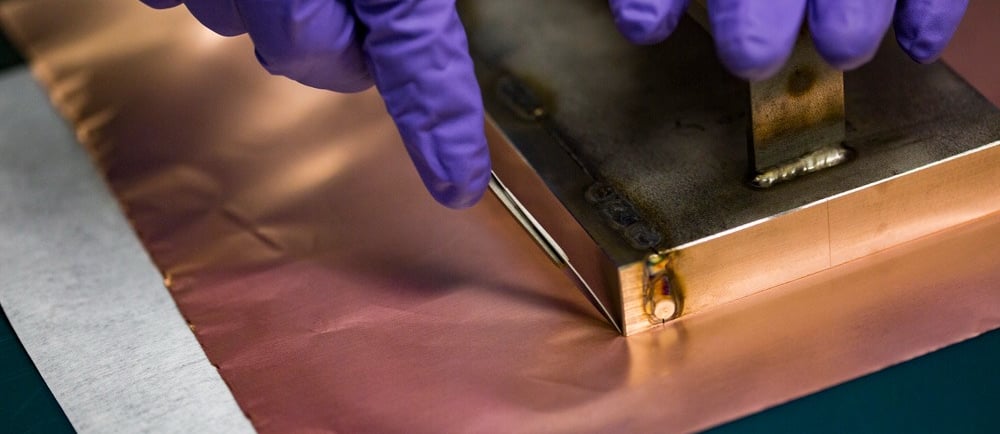Silica Sand as a Revolutionary Anode Material
Pioneering Longer-Lasting, High-Density Batteries


The Limitations of Carbon Anodes
Traditional graphite anodes, while reliable, face critical challenges in meeting modern energy demands:
Low Theoretical Capacity
Graphite stores ~372 mAh/g, limiting energy density.
Degradation
Repeated lithium-ion intercalation causes structural wear.
Sustainability Concerns
Mining and processing graphite carries environmental costs.
These limitations have spurred the search for alternatives—and silica sand-derived silicon is rising to the forefront.
From Sand to Silicon: The Transformation Process
Purification
High-purity silica sand (≥99% SiO₂) is refined to remove impurities like iron and alumina.
Reduction
SiO₂ is converted to metallurgical-grade silicon via carbothermal reduction.
Nanostructuring
Silicon is engineered into nanoparticles, nanowires, or porous structures to mitigate volume expansion (~300%) during lithiation.
Composite Integration
Silicon is blended with carbon or polymers to enhance conductivity and stability.
Breakthroughs in Silica Sand-Based Battery Performance: Challenges and Innovations
Extended Lifespan
Nanostructured silicon anodes from silica sand achieved 1,200 cycles with 80% capacity retention (University of California, 2022).
Enhanced Energy Density
Prototype batteries demonstrated 40% higher energy density than graphite-based cells (Nature Energy, 2023).
Fast Charging
Porous silicon architectures enabled 80% charge in 15 minutes (Advanced Materials, 2023).
Challenges and Innovations
While promising, silicon anodes face hurdles:
Volume Expansion
Causes electrode cracking and capacity fade.
Solutions:
Porous Silicon Designs
Accommodate expansion while maintaining structural integrity.
Hybrid Anodes
Combine silicon with graphene or carbon nanotubes for stability.
Advanced Binders
New polymers enhance electrode adhesion.
Purnomo Silica addresses these challenges by supplying ultra-pure, consistently graded sand optimized for cutting-edge silicon anode R&D.
Why Battery Manufacturers Choose Purnomo Silica
High-Purity Sand
≥99.5% SiO₂ content, critical for efficient silicon production.
Custom Grading
Particle sizes tailored for carbothermal reduction or direct synthesis.
Sustainable Sourcing
Ethically mined sand with a minimal carbon footprint.
Technical Collaboration
Support for anode developers in optimizing sand-to-silicon processes.
The Future of Silica Sand in Energy Storage
Electric Vehicles (EVs)
Extend range and reduce charging times.
Grid Storage
Enable cost-effective, long-duration energy solutions.
Consumer Electronics
Power thinner, lighter devices with longer battery life.
Conclusion
Silica sand is poised to revolutionize the energy storage landscape, offering a sustainable, high-performance alternative to carbon anodes. As researchers and manufacturers harness its potential, the shift to silicon-based batteries will drive longer lifespans, higher energy densities, and greener technology.
Purnomo Silica is at the heart of this transformation, providing the premium-grade sand essential for pioneering battery innovations. Partner with us to power the future of energy storage.
Why Silica Sand? The Silicon Advantage
Silica sand, primarily composed of silicon dioxide (SiO2), is emerging as a revolutionary anode material in battery technology. Silicon, the principal component of silica sand, boasts a significantly higher theoretical capacity for lithium ions compared to conventional carbon anodes. This remarkable attribute makes silicon a preferred choice for developing high-density batteries, as it has the potential to enhance energy storage efficiency. While graphite anodes typically provide a capacity of around 372 mAh/g, silicon can offer up to 4200 mAh/g, establishing a distinct advantage in energy density.
In addition to its impressive capacity, silicon is lightweight. This low density is particularly beneficial for applications seeking to minimize weight without compromising battery performance. With growing demand for portable energy sources, such as electric vehicles and consumer electronics, the importance of efficient and lightweight battery materials cannot be overstated. Silica sand, therefore, stands out not only for its performance but also for its accessibility and economical production. Compared to carbon, which can vary significantly in price and availability, silica sand is abundant, making it a cost-effective choice for wide-scale industrial application.
Furthermore, utilizing silica sand aligns with sustainability goals. As industries increasingly prioritize environmentally friendly materials, the integration of silica sand in battery technology could signify a pivotal shift. The extraction and processing of silica sand tend to have a lower environmental impact compared to the mining processes required for other materials, such as lithium for batteries. The transition towards silica-based anodes thus holds promise not only for improved battery performance but also for aligning with sustainability practices that aim to reduce ecological footprints.
In conclusion, the superior characteristics of silica sand, particularly its exceptional capacity for lithium ion storage, lightweight properties, and cost-effectiveness, position it as a highly advantageous alternative to traditional carbon anodes. As research and development in this field progress, the potential of silica sand in pioneering longer-lasting batteries is becoming increasingly evident.
